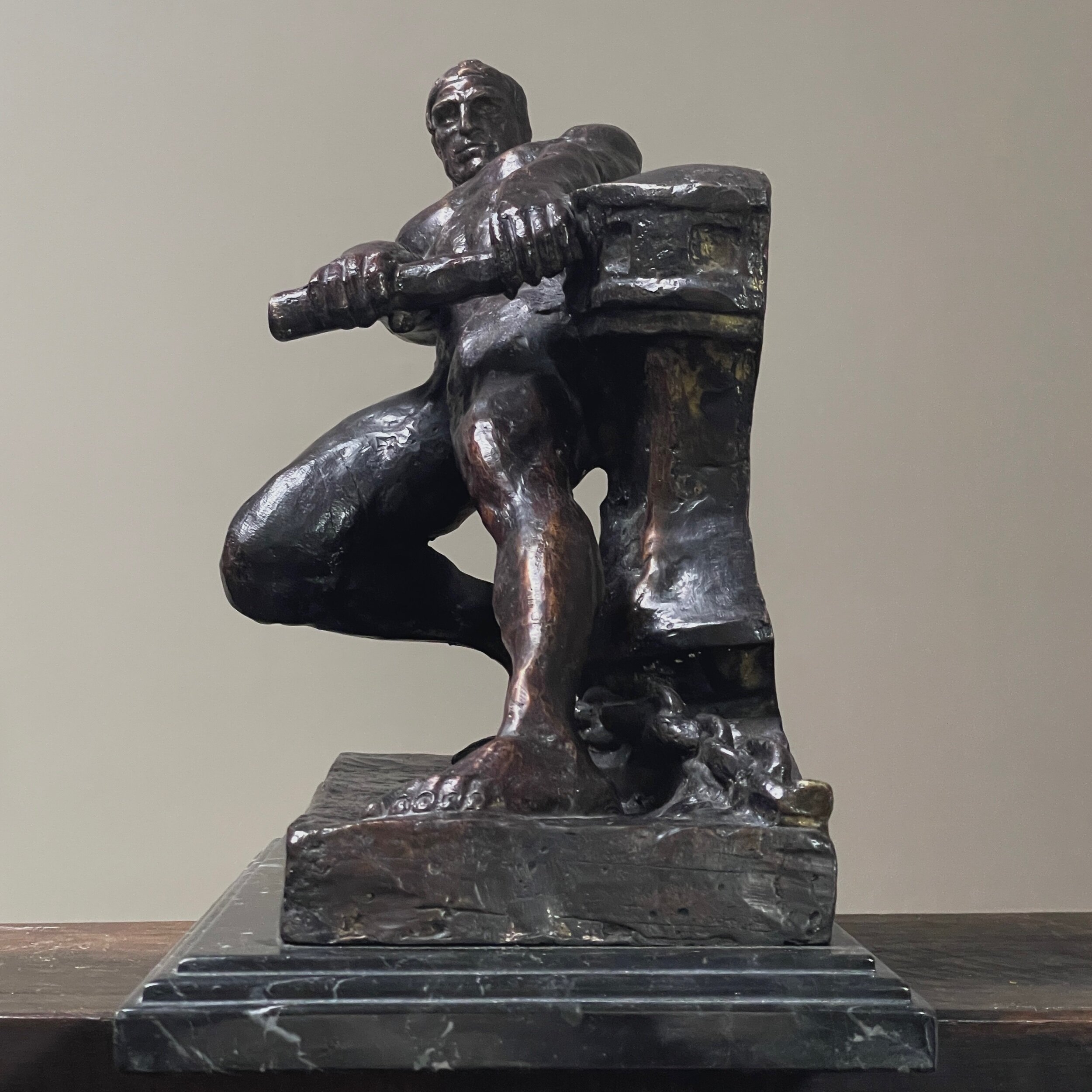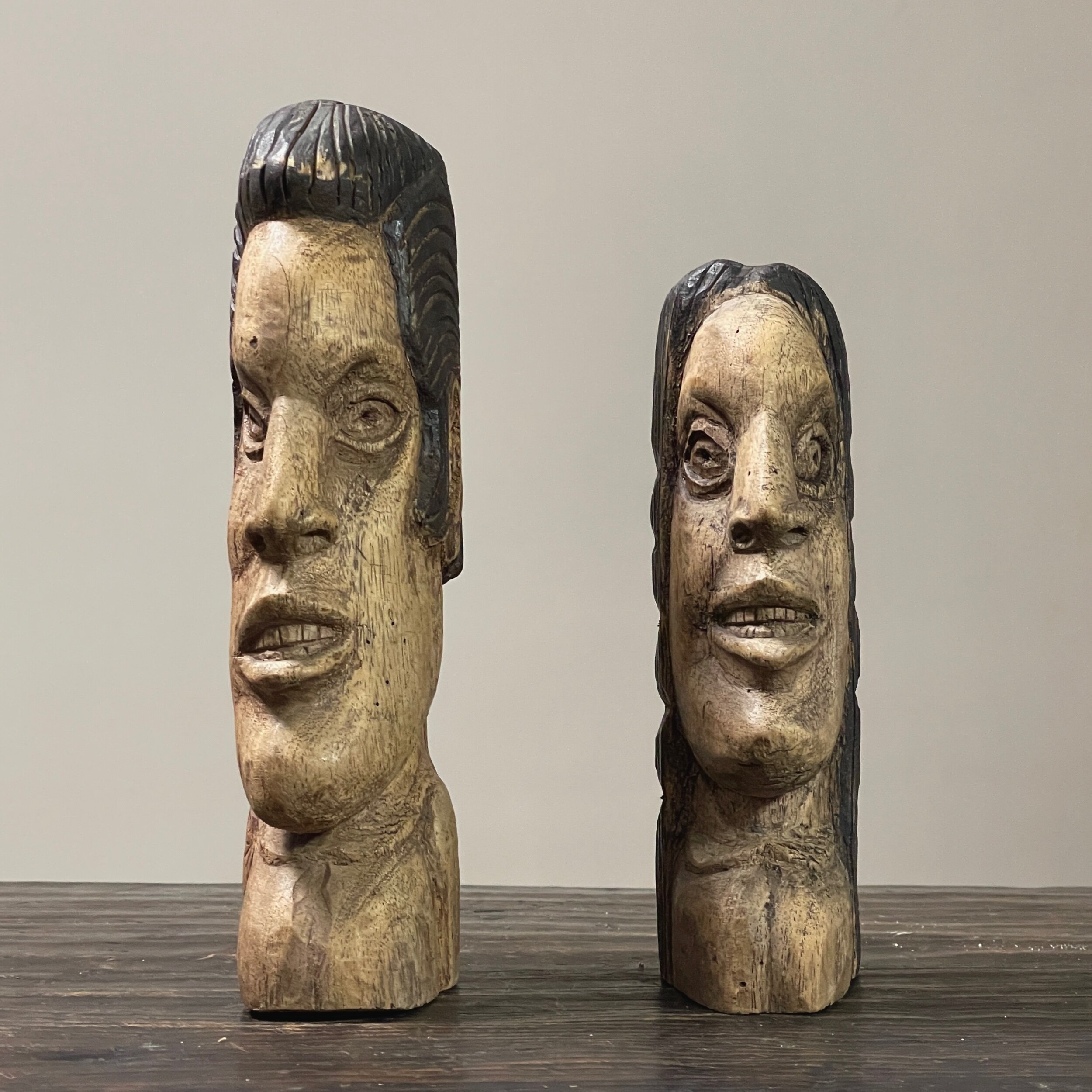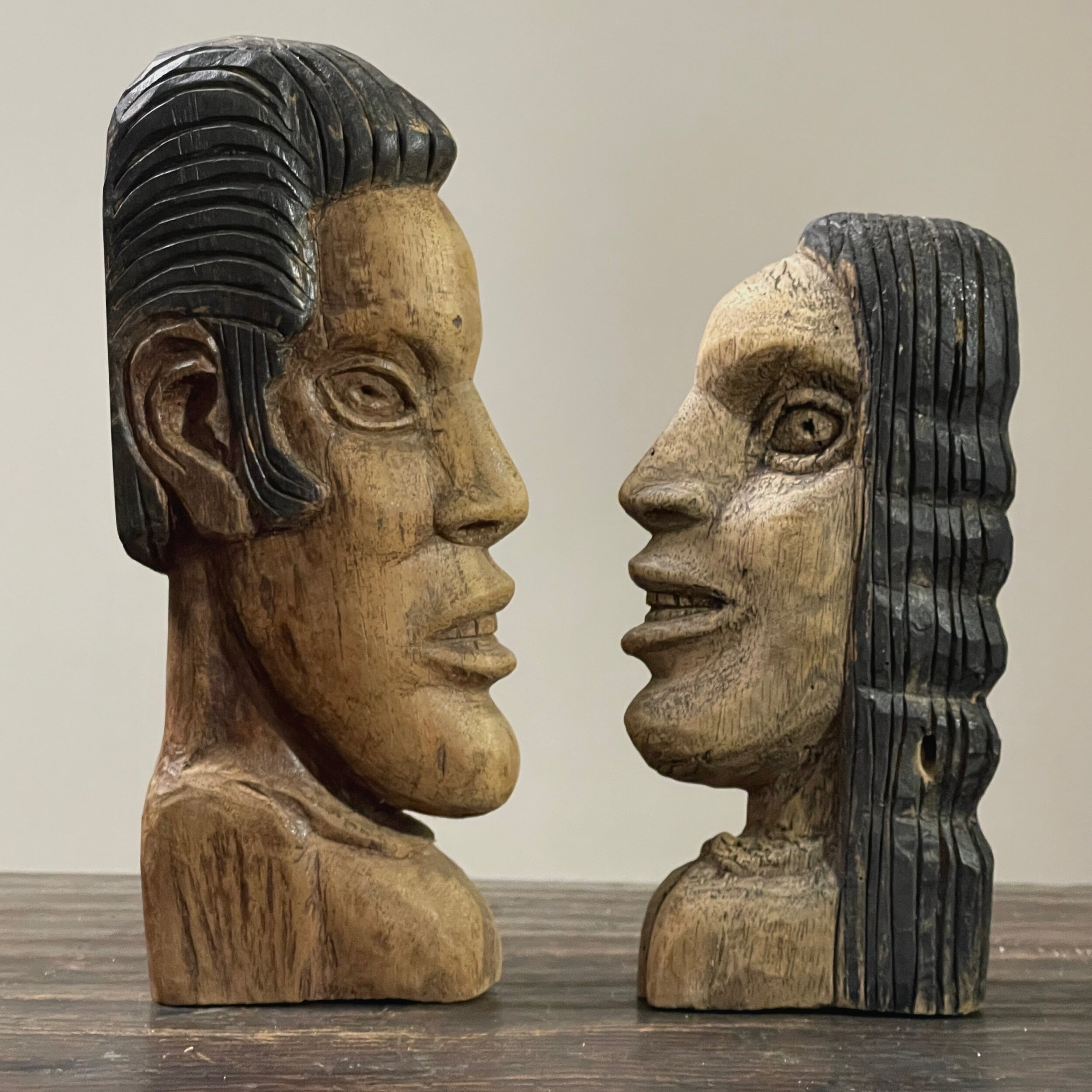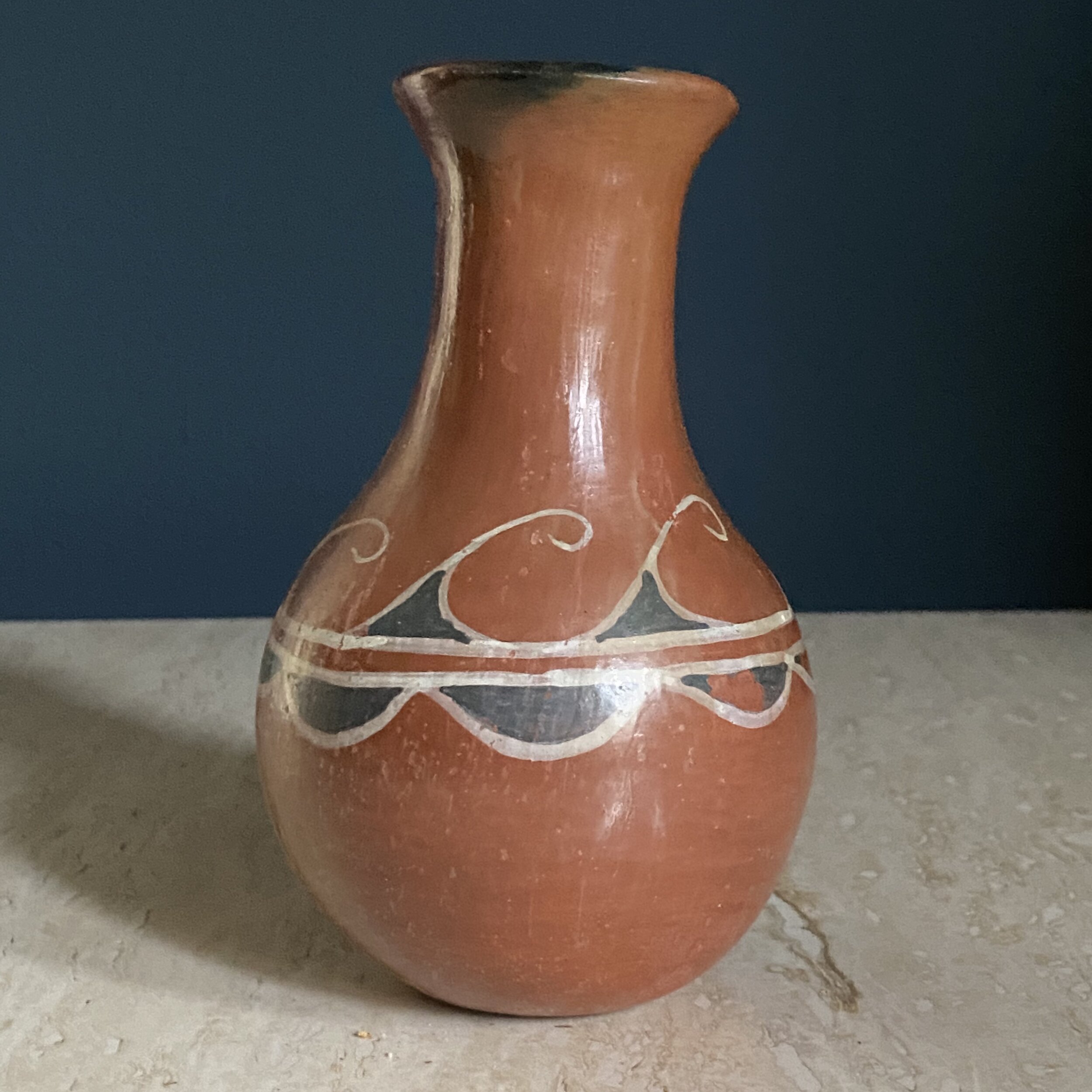Henri Bargas - “Man Turning A Capstan” Art Deco Bronze Figurative Sculpture, Signed (ca. 1930)
Henri Bargas - “Man Turning A Capstan” Art Deco Bronze Figurative Sculpture, Signed (ca. 1930). Bronze male nude turning a capstan with a heavy chain. Sits atop a black marble tiered plinth. Signed at the base of the sculpture. In very good condition with wear consistent with age. Please refer to pictures for details.
Size: 15.5”W x 14.25”H x 8”D
Henri Bargas was a French sculptor who exhibited at many exhibitions during the 1930's and is famous for his terra-cotta sculptures. Barges exhibited at the Paris International Exhibition in 1925, credited with the beginning of the Art Deco style. His male figural pieces are characterized by a demonstration of athletic and idealized prowess typical of Greek sculptures.
Henri Bargas - “Man Turning A Capstan” Art Deco Bronze Figurative Sculpture, Signed (ca. 1930). Bronze male nude turning a capstan with a heavy chain. Sits atop a black marble tiered plinth. Signed at the base of the sculpture. In very good condition with wear consistent with age. Please refer to pictures for details.
Size: 15.5”W x 14.25”H x 8”D
Henri Bargas was a French sculptor who exhibited at many exhibitions during the 1930's and is famous for his terra-cotta sculptures. Barges exhibited at the Paris International Exhibition in 1925, credited with the beginning of the Art Deco style. His male figural pieces are characterized by a demonstration of athletic and idealized prowess typical of Greek sculptures.
Henri Bargas - “Man Turning A Capstan” Art Deco Bronze Figurative Sculpture, Signed (ca. 1930). Bronze male nude turning a capstan with a heavy chain. Sits atop a black marble tiered plinth. Signed at the base of the sculpture. In very good condition with wear consistent with age. Please refer to pictures for details.
Size: 15.5”W x 14.25”H x 8”D
Henri Bargas was a French sculptor who exhibited at many exhibitions during the 1930's and is famous for his terra-cotta sculptures. Barges exhibited at the Paris International Exhibition in 1925, credited with the beginning of the Art Deco style. His male figural pieces are characterized by a demonstration of athletic and idealized prowess typical of Greek sculptures.
























